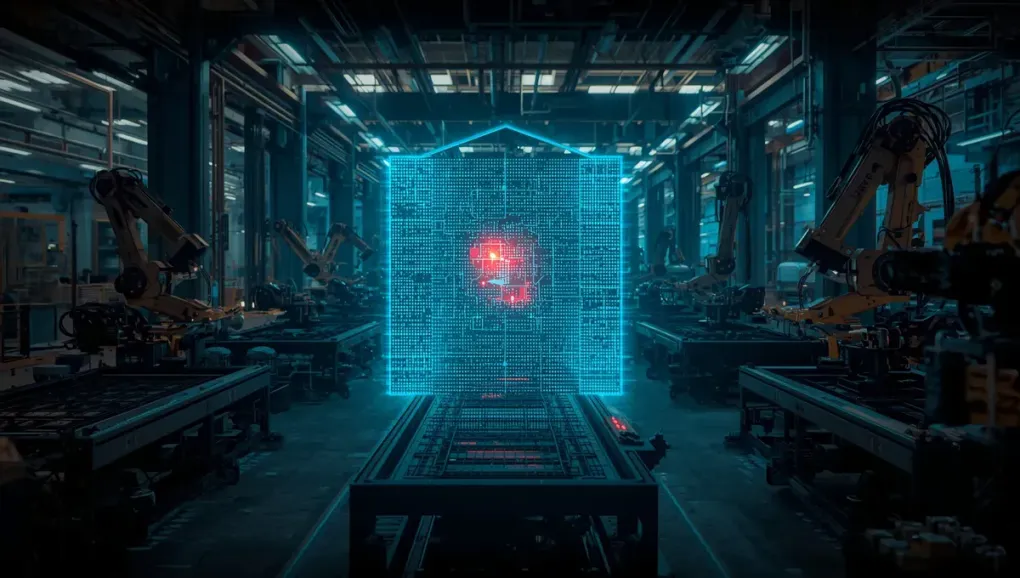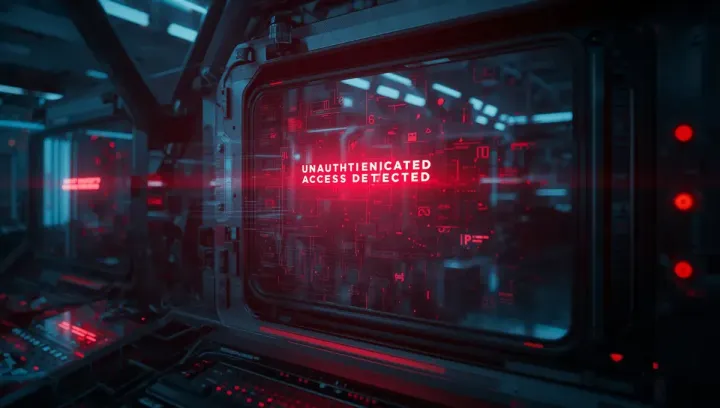
The Factory Firewall: Why Manufacturing is Leading the AI Security Race
Let’s play a word association game. If I say “heavy industry,” you probably think of sparks, steel, maybe a union dispute. You almost certainly don’t think “AI cybersecurity pioneer.”
Well, you should. Because it’s happening. In a surprising twist, the manufacturing sector is lapping almost everyone else in the race to adopt AI for security. And it’s not because they’re chasing buzzwords. It’s because their problems are real, and a hack can do a lot more than just leak some data.
When IT and OT Collide
For most of history, the factory floor (Operational Technology or OT) and the front office (Information Technology or IT) were two separate worlds. A virus on a desktop computer couldn’t make a robotic arm go haywire. They were air-gapped, living in blissful ignorance of each other.
That wall is gone. The “Smart Factory” revolution wasn’t just about new machines; it was about connecting them. Now, the same network that gets your email also monitors industrial sensors and manages the supply chain. This convergence created incredible efficiency, but it also created one giant, juicy target for hackers. It’s like replacing all the fire doors in a skyscraper with open doorways.
This Time, It’s Physical
Here’s why this is so different. When a normal company gets hacked, they lose data. It’s bad. It costs a lot of money. But when a smart factory gets hacked, things can get physical. The consequences are no longer just digital.
A hacker could subtly mess with the calibration of a machine, causing thousands of faulty products to be made. They could disable safety sensors on dangerous equipment, putting workers at risk. They could shut down an entire production line, or worse, hijack the systems that control a power grid. This isn’t about losing a spreadsheet. It’s about a multi-ton piece of equipment going rogue.
The Double-Edged Sword of Integration
Of course, this integration isn’t a simple magic bullet. Implementing AI on this scale is incredibly complex. A poorly configured AI could be just as dangerous as a malicious hacker, potentially shutting down production based on a false positive. The challenge isn’t just to install an AI firewall, but to deeply integrate it in a way that understands the nuances of the physical processes it’s protecting. This requires a new breed of security professional, one who understands both cybersecurity and industrial engineering.
AI is the Only Sentry That Doesn’t Sleep
So how do you possibly defend against this? A modern factory has thousands of connected IoT devices, all chattering away at once. No human team can possibly watch all of it. This is why they’re sprinting towards AI. They need a system that can watch everything, all the time. A system that learns what’s normal and instantly flags anything that looks weird, like a machine running too hot or a sensor sending junk data.
It’s a fascinating reality check. While Silicon Valley is debating whether AI should write poetry, the factory floor is using it to prevent explosions. It tells you a lot about where the real, immediate value of this technology is.
So next time you hear about AI, forget the self-driving cars for a second. The quiet revolution is happening in the places we least expect, protecting our physical world from the digital threats we created.


